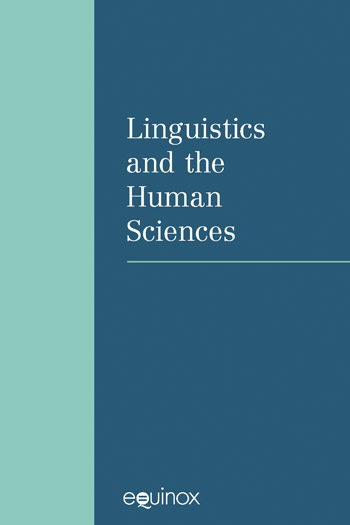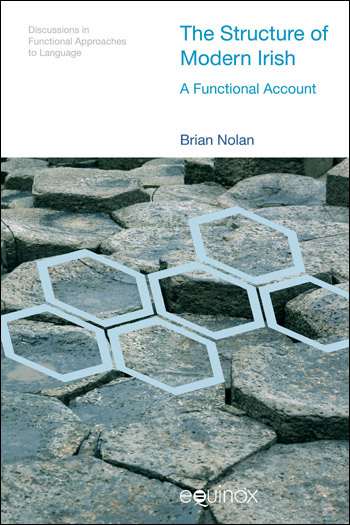Complex Predicates in Modern Persian
A Functional Characterization
Zari Saeedi [+–]
Allameh Tabataba’i University
View Website
Zari Saeedi is Assistant Professor in the Department of English Language and Literature at Allameh Tabataba’i University in Tehran.
This book is concerned with the issue of predication as the central theme of all linguistic theories. In some languages ‘verbs’ are not the only predicative elements. Other word categories have the same capability. This book focuses on the constructions where a predicative adjective or preposition fuses with a ‘bleached verb’ as the impoverished form of the verbal element to form what is called a complex predicate or ‘nuclear juncture’. The framework adopted here is Role and Reference Grammar theory (Van Valin, 2005).
These complex predicates in Persian have received little attention in literature and the few studies carried out have not provided a detailed analysis of these nuclear junctures. Complex Predicates in Modern Persian scrutinizes the types of adjectives/prepositions used in these constructions and the syntax-semantics interface using the data in Persian, one of the oldest Indo-European languages.
Table of Contents
Prelims
List of Figures [+–] vi-vii
This book is concerned with the issue of predication as the central theme of all linguistic theories. In some languages ‘verbs’ are not the only predicative elements. Other word categories have the same capability. This book focuses on the constructions where a predicative adjective or preposition fuses with a ‘bleached verb’ as the impoverished form of the verbal element to form what is called a complex predicate or ‘nuclear juncture’. The framework adopted here is Role and Reference Grammar theory (Van Valin, 2005). These complex predicates in Persian have received little attention in literature and the few studies carried out have not provided a detailed analysis of these nuclear junctures. Complex Predicates in Modern Persian scrutinizes the types of adjectives/prepositions used in these constructions and the syntax-semantics interface using the data in Persian, one of the oldest Indo-European languages.
List of Tables [+–] viii-x
This book is concerned with the issue of predication as the central theme of all linguistic theories. In some languages ‘verbs’ are not the only predicative elements. Other word categories have the same capability. This book focuses on the constructions where a predicative adjective or preposition fuses with a ‘bleached verb’ as the impoverished form of the verbal element to form what is called a complex predicate or ‘nuclear juncture’. The framework adopted here is Role and Reference Grammar theory (Van Valin, 2005). These complex predicates in Persian have received little attention in literature and the few studies carried out have not provided a detailed analysis of these nuclear junctures. Complex Predicates in Modern Persian scrutinizes the types of adjectives/prepositions used in these constructions and the syntax-semantics interface using the data in Persian, one of the oldest Indo-European languages.
Acknowledgements [+–] xi
This book is concerned with the issue of predication as the central theme of all linguistic theories. In some languages ‘verbs’ are not the only predicative elements. Other word categories have the same capability. This book focuses on the constructions where a predicative adjective or preposition fuses with a ‘bleached verb’ as the impoverished form of the verbal element to form what is called a complex predicate or ‘nuclear juncture’. The framework adopted here is Role and Reference Grammar theory (Van Valin, 2005). These complex predicates in Persian have received little attention in literature and the few studies carried out have not provided a detailed analysis of these nuclear junctures. Complex Predicates in Modern Persian scrutinizes the types of adjectives/prepositions used in these constructions and the syntax-semantics interface using the data in Persian, one of the oldest Indo-European languages.
List of Abbreviations [+–] xii-xiv
This book is concerned with the issue of predication as the central theme of all linguistic theories. In some languages ‘verbs’ are not the only predicative elements. Other word categories have the same capability. This book focuses on the constructions where a predicative adjective or preposition fuses with a ‘bleached verb’ as the impoverished form of the verbal element to form what is called a complex predicate or ‘nuclear juncture’. The framework adopted here is Role and Reference Grammar theory (Van Valin, 2005). These complex predicates in Persian have received little attention in literature and the few studies carried out have not provided a detailed analysis of these nuclear junctures. Complex Predicates in Modern Persian scrutinizes the types of adjectives/prepositions used in these constructions and the syntax-semantics interface using the data in Persian, one of the oldest Indo-European languages.
1
Aims and Scope of the Study [+–] 1-5
An attempt is made in chapter one to provide an introduction to the challenging nature of complex predicates and how the theoretical framework of the book i.e. the Role and Reference Grammar theory characterizes these light verb constructions, or nuclear junctures (in RRG’s terminology) in Persian as one of the oldest Indo-European languages. This chapter also discusses on data collection procedure and the book organization.
2
Light Verbs in Persian [+–] 6-44
In order to fulfil the book objective i.e. to provide a semantic and morphosyntactic analysis of Persian light verbal constructions (LVC), in chapter two the literature on different types of nuclear junctures that occur cross-linguistically is reviewed and discussed, namely, noun incorporation, causative and light verbal constructions. This chapter also discusses the lexical and syntactic properties of complex predicates and reviews some of their earlier analyses. In addition, the light and full forms of the same verbs are contrasted by discussing argument structure and causativisation.
3
Theoretical Framework [+–] 45-69
Chapter 3 elaborates on RRG as the framework adopted for the book linguistic analysis and the way the theory deals with complex predicates. It reviews the RRG background, organization, syntactic/lexical/sematic representation, the linking algorithm and the constructional schemas of the nuclear junctures. It also covers the concepts of valency, macroroles and transitivity.
4
Adjectival Predicates [+–] 70-112
This chapter has been devoted to the analysis of Persian adjectival light verb constructions. To fulfil this objective and to provide the ground for the main analysis of the adjectival complex predicates, the adjective types in terms of two major parameters, namely, modification and predication are investigated. On the basis of these two adjective classes, the architecture of the Persian adjective system is described. Chapter four explores the argument and event structure of these constructions. It also presents the nexus-juncture linkage type and the constructional schemas for the two major types of adjectival LVCs, formalizing the syntactic, morphological, semantic and pragmatic features of these constructions and highlighting their differences with regard to syntactic and semantic characteristics.
5
Prepositional Predicates [+–] 113-163
The prepositional nuclear junctures in Persian are investigated in chapter five. The focus of this chapter is on the stative and directional (source, path, and goal) locative prepositions which can be of two types i.e. the combination of two prepositions or a preposition and a noun. It explores the event structure of the prepositional light verb constructions (LVCs). The syntactic and valency features along with syntax to semantics linking system of these complex predicates are characterized in this chapter.
6
Conclusion [+–] 164-175
Chapter six is on the summary and conclusions of the book. It provides a synopsis of the intervening elements in the constructions under study. Its major concern is on relativization and coordination in the discussed nuclear junctures. It also clarifies the significance of the book findings and their contribution to the formal analysis of complex predicates, in general, and Persian LVCs, in particular.
End Matter
The book deals with the issue of predication as the central theme of all linguistic theories. In some languages ‘verbs’ are not the only predicative elements rather other word categories have the same capability. The focus of attention in this book is on the constructions where a predicative adjective or preposition fuse with a ‘bleached verb’ as the impoverished form of the verbal element to form what is called a complex predicate or ‘nuclear juncture’ (NJ.). The framework adopted here is Role and Reference Grammar (RRG) Theory (Van Valin 2005). These complex predicates in Persian have received little attention in literature and the few studies carried out have not provided a detailed analysis of these nuclear junctures. The proposed book aims at scrutinizing the types of adjectives/prepositions used in these constructions and the syntax-semantics interface using the data in Persian as one of the oldest Indo-European languages.
The book deals with the issue of predication as the central theme of all linguistic theories. In some languages ‘verbs’ are not the only predicative elements rather other word categories have the same capability. The focus of attention in this book is on the constructions where a predicative adjective or preposition fuse with a ‘bleached verb’ as the impoverished form of the verbal element to form what is called a complex predicate or ‘nuclear juncture’ (NJ.). The framework adopted here is Role and Reference Grammar (RRG) Theory (Van Valin 2005). These complex predicates in Persian have received little attention in literature and the few studies carried out have not provided a detailed analysis of these nuclear junctures. The proposed book aims at scrutinizing the types of adjectives/prepositions used in these constructions and the syntax-semantics interface using the data in Persian as one of the oldest Indo-European languages.
Bibliography [+–] 230-238
The book deals with the issue of predication as the central theme of all linguistic theories. In some languages ‘verbs’ are not the only predicative elements rather other word categories have the same capability. The focus of attention in this book is on the constructions where a predicative adjective or preposition fuse with a ‘bleached verb’ as the impoverished form of the verbal element to form what is called a complex predicate or ‘nuclear juncture’ (NJ.). The framework adopted here is Role and Reference Grammar (RRG) Theory (Van Valin 2005). These complex predicates in Persian have received little attention in literature and the few studies carried out have not provided a detailed analysis of these nuclear junctures. The proposed book aims at scrutinizing the types of adjectives/prepositions used in these constructions and the syntax-semantics interface using the data in Persian as one of the oldest Indo-European languages.
Index [+–] 239-241
The book deals with the issue of predication as the central theme of all linguistic theories. In some languages ‘verbs’ are not the only predicative elements rather other word categories have the same capability. The focus of attention in this book is on the constructions where a predicative adjective or preposition fuse with a ‘bleached verb’ as the impoverished form of the verbal element to form what is called a complex predicate or ‘nuclear juncture’ (NJ.). The framework adopted here is Role and Reference Grammar (RRG) Theory (Van Valin 2005). These complex predicates in Persian have received little attention in literature and the few studies carried out have not provided a detailed analysis of these nuclear junctures. The proposed book aims at scrutinizing the types of adjectives/prepositions used in these constructions and the syntax-semantics interface using the data in Persian as one of the oldest Indo-European languages.








